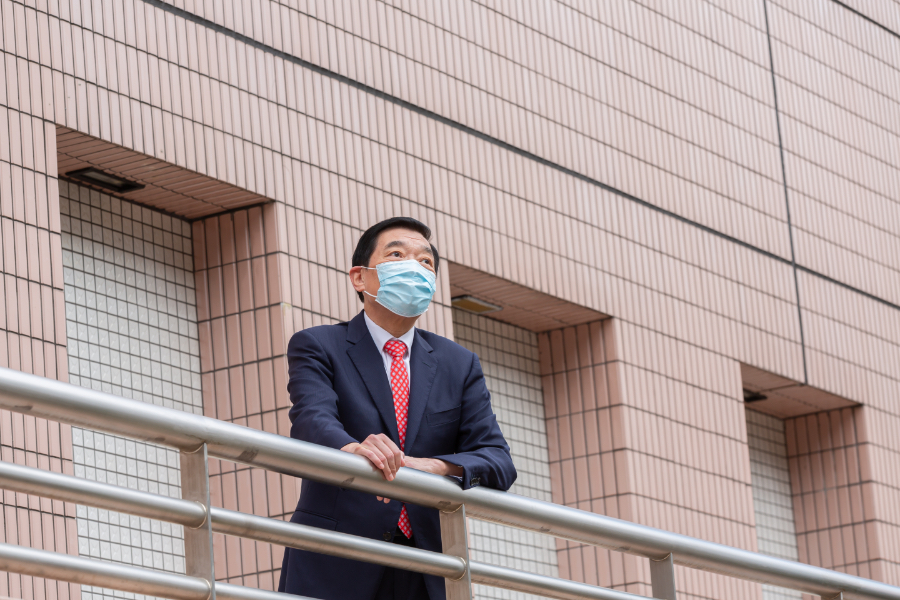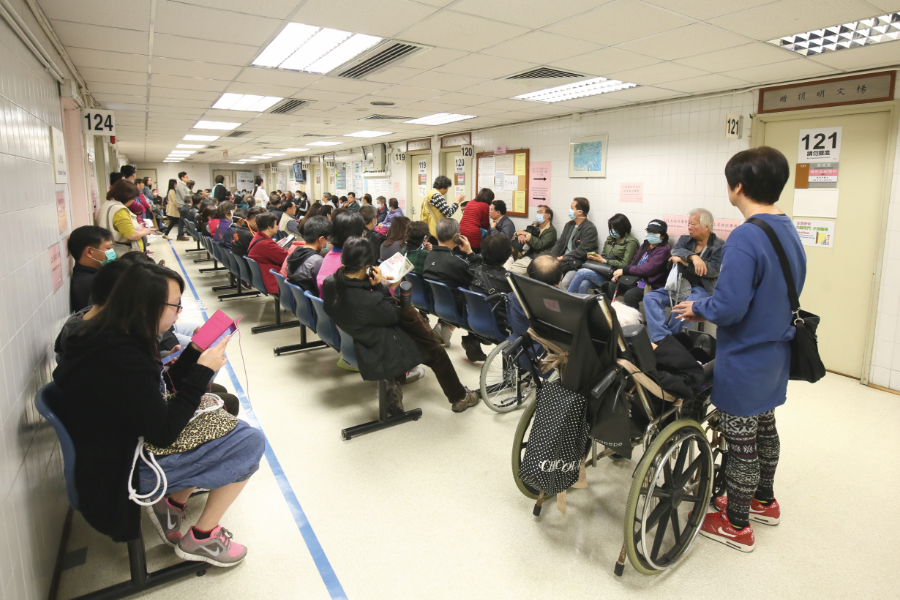Chairman: A people-centred approach to sustainability

The 30th anniversary of the Hospital Authority (HA) this December is a time to reflect on past achievements and, more importantly, to plan for the decades to come. Soon after taking up his position at the end of last year, Chairman Henry Fan set up a Task Group on Sustainability to formulate a long-term strategy. After drawing up his blueprint, he believes the most important attribute for the HA’s future is its people.
Fostering a strong sense of belonging
“The HA suffers a great loss through staff attrition because we spend a long time training our colleagues so that they are proficient in what they do,” Henry says. Take nursing staff as an example, most of them has only a single opportunity of promotion after joining the profession. As a result, the attrition rate for nurses with less than five years’ experience is particularly high. The HA hopes that by improving the career progression pathway, giving greater work exposure, and offering better benefits, we will cultivate a greater sense of belonging.
However, improving employee retention will not by itself be enough to balance service demand and supply. To address this, Henry has devised a three-pronged strategy that involves narrowing upstream, collaborating downstream, and diverting midstream.
However, improving employee retention will not by itself be enough to balance service demand and supply. To address this, Henry has devised a three-pronged strategy that involves narrowing upstream, collaborating downstream, and diverting midstream.
Devising strategic plans to address service demand
Narrowing upstream is a tactic that involves boosting primary care education with a view to encouraging people to have medical examinations and identify health conditions at a younger age. The majority of users of public hospital services are people aged 65 or above, but statistics show that chronic diseases such as diabetes and heart diseases are more prevalent among people of a younger age. This means that hospital admissions among this younger age group will continue to increase, hence burdening the healthcare system. By managing their health earlier, hospital admissions could be reduced at source.
In addition, there are plans to increase the number of ambulatory care centres so that milder cases can be handled by family medicine physicians and General Out-patient Clinics, thus shortening the waiting time for Specialist Out-patient Clinics.
Collaborating downstream involves extending community care by reinforcing partnership with Residential Care Homes for the Elderly. Beds would be reserved for patients in greater need while patients whose conditions have stabilised could be discharged and returned to the community, where they would receive home visits.
Diverting midstream, meanwhile, involves tactics including accelerating the transfer of some hospital patients to the private sector. During the pandemic, for instance, some women were referred to private hospitals to give birth by caesarean section through the Public-Private Partnership programme. Henry points out that an expansion of the programme would help shorten waiting times.
On the other hand, more nurse clinics to be in service is another way to divert the midstream, as experienced nurses could help examine and assess stabilised chronic patients who need follow-up consultation. The development of smart hospitals is another key measure as technology could help ease workloads. Successful implementation of all these ideas, however, depends upon support from HA employees and the public.
In addition, there are plans to increase the number of ambulatory care centres so that milder cases can be handled by family medicine physicians and General Out-patient Clinics, thus shortening the waiting time for Specialist Out-patient Clinics.
Collaborating downstream involves extending community care by reinforcing partnership with Residential Care Homes for the Elderly. Beds would be reserved for patients in greater need while patients whose conditions have stabilised could be discharged and returned to the community, where they would receive home visits.
Diverting midstream, meanwhile, involves tactics including accelerating the transfer of some hospital patients to the private sector. During the pandemic, for instance, some women were referred to private hospitals to give birth by caesarean section through the Public-Private Partnership programme. Henry points out that an expansion of the programme would help shorten waiting times.
On the other hand, more nurse clinics to be in service is another way to divert the midstream, as experienced nurses could help examine and assess stabilised chronic patients who need follow-up consultation. The development of smart hospitals is another key measure as technology could help ease workloads. Successful implementation of all these ideas, however, depends upon support from HA employees and the public.
Gratitude to colleagues for diligent efforts amid pandemic
Reflecting on the HA’s work, Henry says, “Hong Kong’s healthcare system is one of the best in the world. According to the Efficiency Index by Bloomberg in 2018, Hong Kong was ranked as having the most efficient healthcare system in the world, thanks to the tireless efforts of our colleagues.”
He adds, “I would like to thank all my HA colleagues for giving their very best service to the people of Hong Kong. They have demonstrated profound dedication and professionalism to safeguard people’s health during the fight against the pandemic. I call for your continuous support for our development to sustain and improve our public healthcare services in the years to come.”
He adds, “I would like to thank all my HA colleagues for giving their very best service to the people of Hong Kong. They have demonstrated profound dedication and professionalism to safeguard people’s health during the fight against the pandemic. I call for your continuous support for our development to sustain and improve our public healthcare services in the years to come.”
